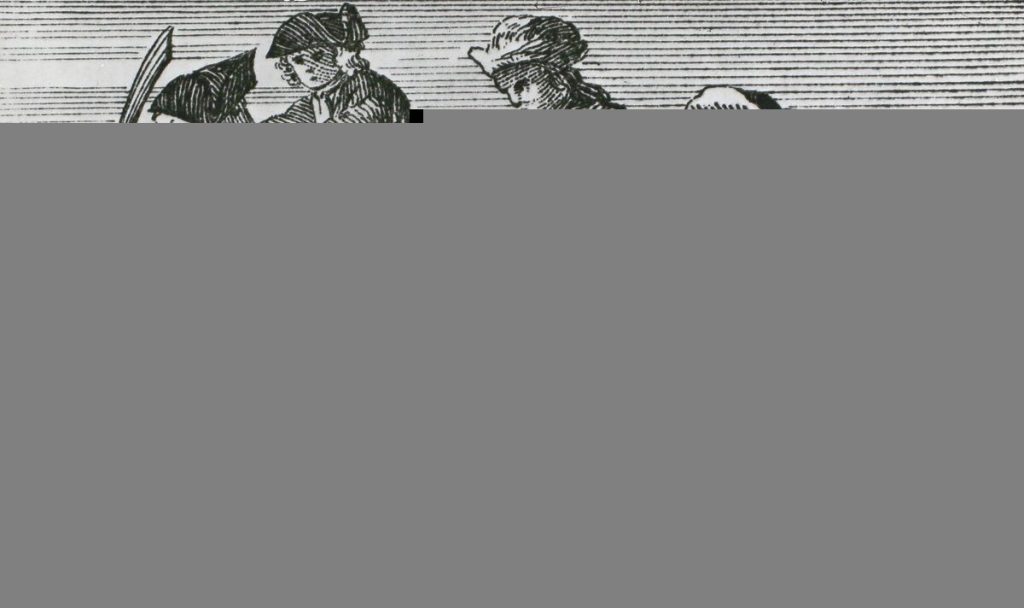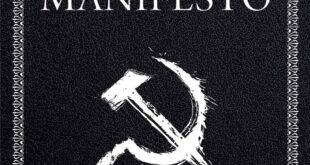
The stone stands next to a bus stop on the outskirts of Chichester. Today, post-war semi-detached houses, a community centre and a sense of Home Counties order prevails on Broyle Road in this anonymous corner of Sussex.
Yet, if you can pick out the inscription on the faded stone, you can just about make out a minatory warning.
Dated AD 1749, the stone proclaims that it stands, “as a memorial to posterity and a warning to this and succeeding generations”.
Two centuries ago, this now placid slice of suburbia was the location of a mass execution of the leading members of what is now believed to be the earliest British mafia gang.
“The Hawkhurst Gang was the first time something that looks like modern organized crime appeared in Britain,” says Joseph Dragovich, author of a new book on the gang’s murderous deeds and ultimate downfall.
READ MORE: Body of girl, 15, ‘who lured British boy to his death’ is found in woods
“They were the most successful gang to take advantage of huge changes in British life. They built a criminal empire in Kent and Sussex and were the most violent and destructive gang of the era.”
Robbing custom houses, brutally killing supposed informants, openly drinking in pubs along the Sussex and Kent coast and marshalling paramilitary style horse-back raids were all trademarks of the gang’s ruthless methods, openly mocking the authorities of the age.
Yet the contraband that made them rich was nothing more than tea – a product which, in the 1700s, held a cachet that’s hard to comprehend today. “The key to the gang’s success was tea and tax,” explains Joseph. “Europe was almost constantly at war in the 18th century and the British government needed to pay for the army and navy.
“Income taxes were almost a century away because most people didn’t have incomes in the way we think of them today.
“So the government taxed imports like tea, coffee and brandy because they were relatively easy to see coming and going in the ports.
“As the government needed more money, they cranked up the taxes.”
This was the era when the British love affair with drinking endless mugs of hot tea began in earnest.
Yet it was taxed by weight instead of value, meaning tea lovers were charged the same amount, regardless of how much the product actually cost to import. This anomaly resulted in the taxation on tea making up almost 50 per cent of the price passed down to customers.
The Hawkhurst gang realised that anyone who avoided paying the tax could make a lot of money. On their most famous raid on Poole customs house, the gang left the stolen vats of brandy but took the tea.
The gang’s leaders – Thomas Kingsmill, William Fairall and Arthur Gray – knew the government was not equipped to deal with a heavily-armed mafia committing a crime very few people felt was even a crime at all.
“In the 18th century there were no professional police, much less law enforcement, that knew how to deal with something like the Hawkhurst Gang,” says Joseph.
“Local magistrates weren’t able to conduct large investigations, and the customs service was using a relatively small number of
people to patrol a lot of difficult coastline. Using the military was not a great option either, because people saw that as a slide into dictatorship. For this was an era when we started to see something resembling our modern expectations of the rule of law.
“The government couldn’t just arrest people – they needed evidence to convict people of crimes.
“Arresting the Hawkhurst Gang was really difficult if there were no willing witnesses.”
It was this connivance of locals that enabled the Hawkhurst Gang to operate with almost total impunity, culminating in the Poole Custom House raid of 1747, where the gang broke into a lockup to retake the contraband that had been seized from another local gang.
“During the raid they were just acting as hired guns for another smuggling gang,” says Joseph.
“They were the only gang that had the skills and bloody-mindedness to rob a government facility. That is because the gang weren’t just successful smugglers, they were fearsome paramilitaries.
“That was pretty new in British history and not something that has happened much since.”
But it would be the Poole raid that would signal the slow destruction of the gang.
Several months later one member of the gang, John Diamond, was arrested and jailed. Another, Daniel Chater, offered himself as an alibi but was seen by a local informant talking in a pub with a customs office named Galley.
Assuming that Chater was leaking secrets to the authorities, gang members arrived and plied the pair with drink. Chater and Galley awoke to find themselves tied to a horse being ferociously whipped.
Believing they had killed Galley the gang buried him, though it later transpired the officer had still been alive while earth was being piled on top of him.
Chater was kept in chains for a further three days before being attacked with a knife, then thrown head first down a 30ft well. The gang hurled down rocks until his screaming stopped. “The gang was ready to beat people senseless and subject them to prolonged pain to make a point,” says Joseph.
However, after stories of the horrific deaths of Chater and Galley got out, the mood of locals who had hitherto tolerated the Hawkhurst gang, began to fade.
Appalled at the violence, information on the gang’s whereabouts started to be leaked and the gang leaders were arrested and tried.
Some were hanged at Tyburn while six were hanged north of Chichester on the Broyle Road.
Their dead bodies were hung in chains at various locations around Sussex and Kent as a warning.
“I think the lesson we can learn from the Hawkhurst Gang, and organized crime more generally, is that you can destroy specific gangs, but it is very difficult to stop the underlying issue that created them in the first place,” concludes Joseph. “Destroying the Hawkhurst Gang did not end smuggling in the region, any more than putting Al Capone in jail ended bootlegging.”
Stories of the legends of smugglers’ tunnels endure to this day in the pubs of Rye and Chichester.
Joseph believes some of the spoils seized may still be waiting to be discovered.
“Arthur Gray built a large house called Seacox Heath near Hawk-hurst itself,” he reveals.
“After he died the house fell into disrepair but was rebuilt in the 19th century. It was given to the Soviet government after the Second World War and has been a Soviet/Russian embassy since.
“Gray likely built that house for smuggling. Maybe some tunnels and hidden chambers are in there.”
- Order Hawkhurst by Joseph Dragovich (The History Press Ltd, £16.99) from the Express Bookshop for £16.99. Visit expressbookshop.com or call 020 3176 3832. Free UK P&P on online orders over £25

 Latest Breaking News Online News Portal
Latest Breaking News Online News Portal




